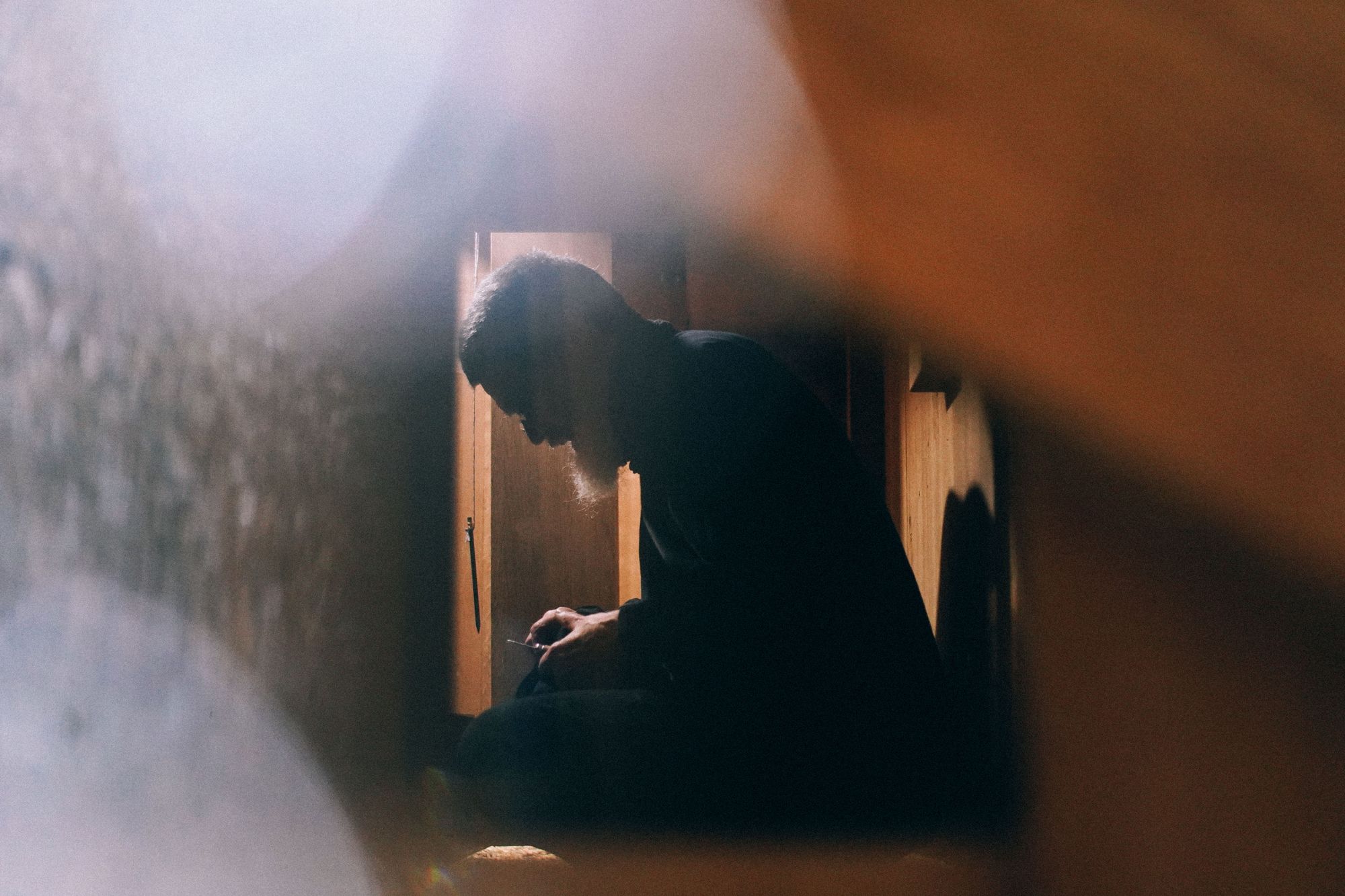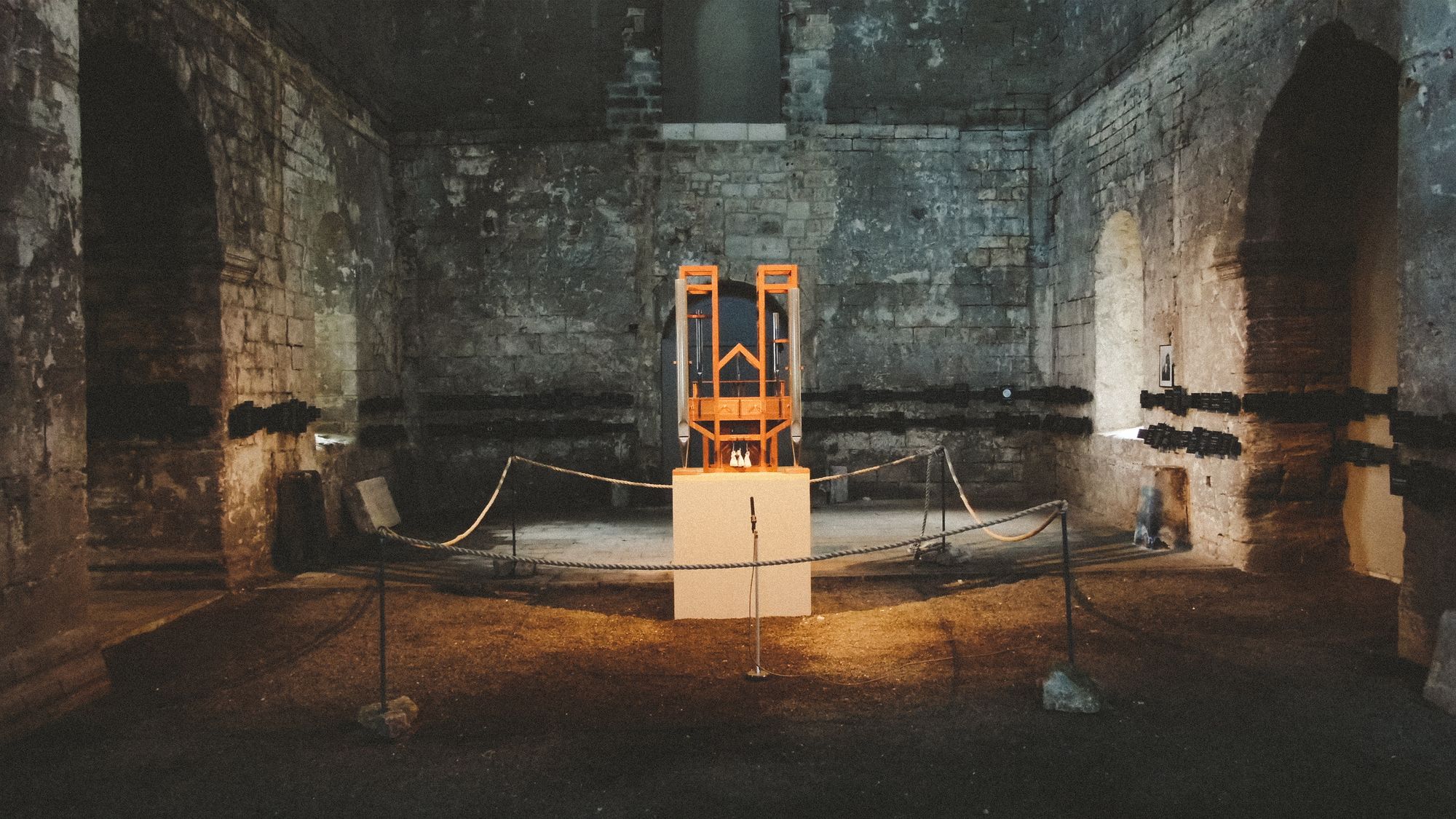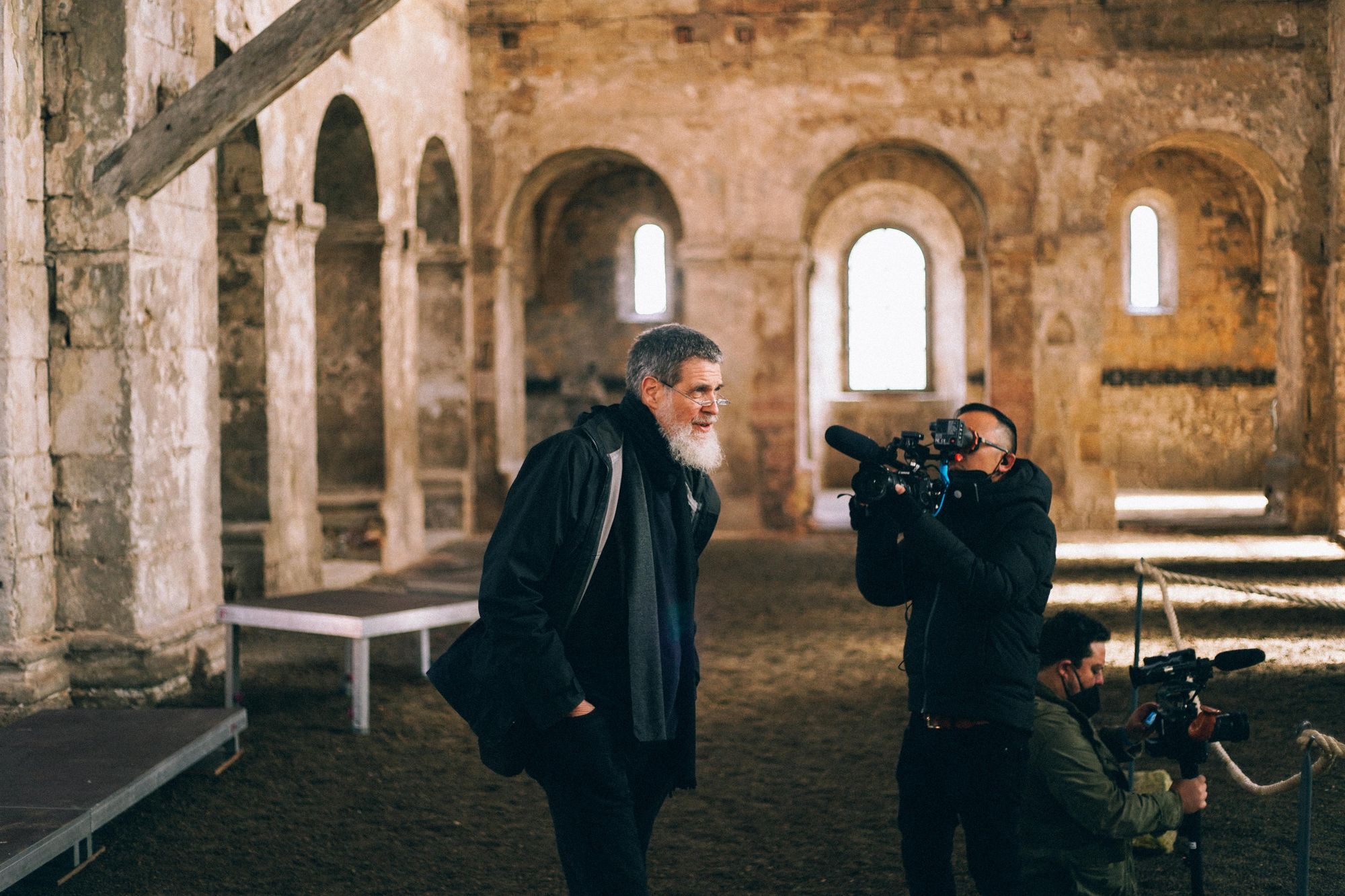
A Film 600 Years in the Making
Two filmmakers are two years into production on a new film exploring slowness, long-term thinking, and our relationship with time. If all goes as planned, they'll be at it for another six centuries.
“When we build, let us think that we build forever. Let it not be for the present delight, nor for present use alone; let it be such a work as our descendants will thank us for.” – John Ruskin
In a church in Halberstadt, Germany, a musical concert has been unfolding since 02001. None of us will live to see its scheduled conclusion.
The composition being performed is John Cage's ORGAN2/ASLSP (aka As SLow aS Possible). Originally conceived for the piano in 01985 and rewritten for the organ two years later, ASLSP consists of eight pieces that should be played, as per Cage's instructions, "As slow as possible." For the John Cage Organ Foundation in Halberstadt, that means 639 years.
The duration is a nod to the small German town's role in music history: the first modern organ was constructed in Halberstadt in 01361 — 639 years before the start of the 21st century. It is also a bet on the future. While an organ's note can theoretically be held indefinitely, the sustained performance of ORGAN2/ASLSP will require successive generations of humans to care for both the instrument and the arts if it has any hope of lasting until 02640.
My friend Brandon Vedder and I are making a similar bet. We are two years into production on Film1/ASAP: As Slow As Possible, a new film exploring slowness, long-term thinking, and our relationship with time. If all goes as planned, we’ll be at it for another six centuries.
Through form and cinematic language we are looking to deconstruct our narrow sense of time by weaving together stories of human, geological, and cosmic time. The narrative heartbeat of Film1/ASAP will be anchored in the performance of ORGAN2/ASLSP in Halberstadt's St. Burchardi Church. Film1/ASAP will be the first installment (indicated by the 1 in the title) of a series of films and will premiere sometime in 02026. The last installment will debut following the culmination of the performance of ORGAN2/ASLSP in 02640. That’s the plan, anyway.
In the world of non-fiction cinema, we tend to operate along a 3-5 year time horizon. From conceptualization to world premiere, that’s generally how much of our lives (not including the marketing and promotion) we expect to give to each project. I’ve been making films for over 20 years. With each one, I’ve sought to shorten that timeline, as there is no shortage of films to be made, only the time to do them.
So, why am I now looking to prolong this process rather than shorten it? How did we arrive at this idea to make a series of films that may span 620 years?
In part, it’s an act of resistance.
Art historians have written about the aesthetic shift that took place in the post-WWII era when culture, specifically throughout Europe and North America, was dominated by mainstream ideologies associated with speed and consumerism. The appetite for more of everything grew by leaps and bounds and left industries scrambling to meet that demand. To counter these dominant cultural narratives, avant-garde filmmakers like Michael Snow and Andy Warhol began to experiment with static filmmaking techniques, composing films which consisted of a single shot of a room or a static shot of the Empire State Building, respectively. “To be radical in this new situation,” author and artist David Campany writes in his book The Cinematic, “was to be slow. A stubborn resistance to the pace of spectacle and money-driven modernization seemed the only creative option.”
In our current age of the 24/7 news cycle, Netflix and TikTok, one needn’t dig too deep to see how speed and short-term thinking dominate the way we move through the world. To get things into people’s hands as quickly as possible, industries have adopted a “move fast and break things” approach with no regard to what it is they’re breaking or who’s responsible for cleaning up the mess. In nearly every aspect of our lives, the standards of the machine are applied to humans, and consequently, the rate at which we engage with the world. What happens when this speed outpaces our own biology? “In such a society,” says Stephen Bartman, author of Hyperculture: The Human Cost of Speed, “the harried listener will struggle to transcribe the hurried message but will never be able to capture its wholeness.”

I first experienced the performance of ORGAN2/ASLSP in Halberstadt, Germany in June of 02018 during a brief trip through Europe promoting my film In Pursuit of Silence. I had come across articles about this curious trans-epochal performance on multiple occasions while traveling down various web-induced rabbit holes over the years. Each time I found myself drawn to it, contemplating for days its reason for being and its implications for those of us desperately bound to human time. The mere existence of this performance stirred something up within me that was both enticing and unnameable. Like many of our encounters with art, ORGAN2/ASLSP caused an expansion in my thinking and made me thirst for more.
As I approached the exterior of the medieval St. Burchardi Church that first time, the muffled tones of the organ that escaped through the cracks and crevices of the battered stonework permeated the soundscape surrounding the church, its dissonance creating a sort of tension with the sounds of the sleepy town of Halberstadt. Like the bell from David Whyte’s poem The Bell and the Blackbird, the sounds of the organ functioned as a sort of call to depth, carrying a message which compels the listener inward.

The chord that fills the old church is unceasing, almost eerie, but oddly soothing. There is no organist or anything particularly musical about this performance. The seemingly clashing tones fill not only every square inch of the church, but also your thoughts. I suspect that some find the experience a bit suffocating. But for those able to shed their modern result-oriented sensibilities, a magical thing starts to occur. The reverberations of the organ begin to seep into your consciousness and form a new silence upon which new thoughts and sensations can take shape. It becomes both a bodily and psychological encounter, allowing the listener to lose herself in her own memories, fantasies, and reveries.

“In this glum desert, suddenly a specific photograph reaches me; it animates me, and I animate it. So that is how I must name the attraction which makes it exist: an animation. The photography itself is in no way animated, but it animates me: this is what creates every adventure.” – Roland Barthes, Camera Lucida
Much like a photograph freezes a moment in time and inspires the viewer to imagine the moments which preceded and follow it, through ORGAN2/ASLSP I experience a softer definition of time, time as a construct with a fluid nature, rather than time as the unyielding force behind the false urgency of many of our modern day fixations. The ancient stonework of St. Burchardi Church, the immediacy of the organ’s tones filling the space, and the distant culmination of the performance produces a profound convergence of past, present, and future. The concept of now expands to encompass what has been, what is before us, and what is to come.
“People like us who believe in physics know that the distinction between past, present and future is only a stubbornly persistent illusion.” – Albert Einstein


Left: Ticket holders getting an up-close view of the chord change in the main chamber which houses the organ on February 5, 02022. Right: Ute Schalz-Laurenze, a long-time collaborator who managed master classes and a music competition organized by the John Cage Organ Foundation Halberstadt, removes the G♯3 pipe. Photos by Transcendental Media.
The performance of ORGAN2/ASLSP has become a worldwide phenomenon. Each time the score calls for a chord change, hundreds of enthusiasts and major media outlets make pilgrimage from all corners of the globe to Halberstadt in order to witness it, to deliberately or unknowingly participate in a communal meditation on the nature of slowness and long-term thinking. On February 5, 02022, as the score specified, a low G♯3 pipe (in American Standard Pitch Notation) was carefully and ceremoniously removed, leaving the other notes — C1, D♭1, D♯4, E4, A♯4, and E5 — to continue sounding until the score calls for yet another chord change in 02024. Like when a bassline drops from a song, the removal of the low G♯3 caused a subtle shift in the air and a heaviness to lift from our chests.

This time, it wasn’t so much the chord change but the spectacle that surrounded it that intrigued us most. In the midst of it all was a profound clashing of the old world and the new, of slowness and urgency. Just as quickly as the news crews and all their technology descended upon Halberstadt did they leave town, satisfied after having captured enough material for their 5-minute segments or 1,000-word articles to populate the 24/7 news feeds. With the long-term in mind, every scene before us appeared to us like a time capsule of a distracted world seeking to abbreviate and encapsulate the stories unfolding all around us, broadcasting hurried messages to a befuddled herd.
“…the tempo of the arts is a function not of how fast notes and images can be generated but of how fast they can be comprehended. To accelerate the speed of delivery beyond the natural power of reception is to distort experience itself: to fracture its integrity into disjointed parts or to compress its substance into an incomprehensible mass.” – Stephen Bertman, Hyperculture: The Human Cost of Speed


Left: Patrick gets Rainer wired up with a microphone. Right: Directors Brandon Vedder (L) and Patrick Shen (R) discuss camera positions inside St. Burchardi Church before the chord change on February 5, 02022. Photos by Alex Kozobolis.
Time will tell how Film1/ASAP and the proposed series will come together. There are many questions yet to be fully answered. How do you tell a story of time and timelessness in a way that does not outpace our biology? That synchronizes with our human rhythms rather than the speed of light at which our world currently operates? One thing we do feel strongly about is this: a film which proposes that we build not for “present delight” but for our descendants that is not itself an expression of this line of thinking would not only be a missed opportunity, but make for an insincere endeavor.
From a clock designed to keep time on the scale of trees to the unhurried movements of glaciers to a 639 year-long musical performance in Germany, the stories and themes at the heart of Film1/ASAP speak to some of the greatest threats to humanity and the planet, such as short-termism and the increasing demands of an ever-accelerating technological world. Keeping this conversation going strong for centuries to come is of paramount importance if we are to have an equitable, just, and safe place for future generations to live. We hope that Film1/ASAP can serve as a foundation that future storytellers can build upon, picking up the threads and observations Film1/ASAP starts to weave together. A multi-generational approach will not only allow this film to continue to tell the important stories of the individuals and organizations featured but also keep these ideas central as each generation navigates their way through the challenges unique to their lives.

If you have story ideas for this project, get in touch with Patrick Shen and Brandon Vedder. If you would like to follow the journey the filmmakers have embarked on, you can sign up to receive updates. They are also accepting tax-deductible donations.
Join our newsletter for the latest in long-term thinking
Subscribe